
Soccer cleats and American football cleats share many similarities that make them interchangeable in some cases.
Both sports require shoes with good traction, stability, and support.
While soccer cleats have a narrower shape and smaller studs, they can still be effective for American football players, especially those who play on grass fields.
But keep in mind that each sport has different rules of playing that may require different gear.
So, In this article, we’ll explore the topic of using soccer cleats for American football and provide helpful insights for players who are considering it.
Can You Use Soccer Cleats For American Football?
Yes, you can use soccer cleats for American football. Soccer cleats are designed to give soccer players much better traction and control on the field, and they can be just as effective on a football field.
Soccer cleats feature plastic or rubber studs on the bottom, offering players a firm grip on grassy fields.
However, when it comes to American football, these spikes may require more traction due to its usual hard-packed playing surfaces, such as artificial turf fields.
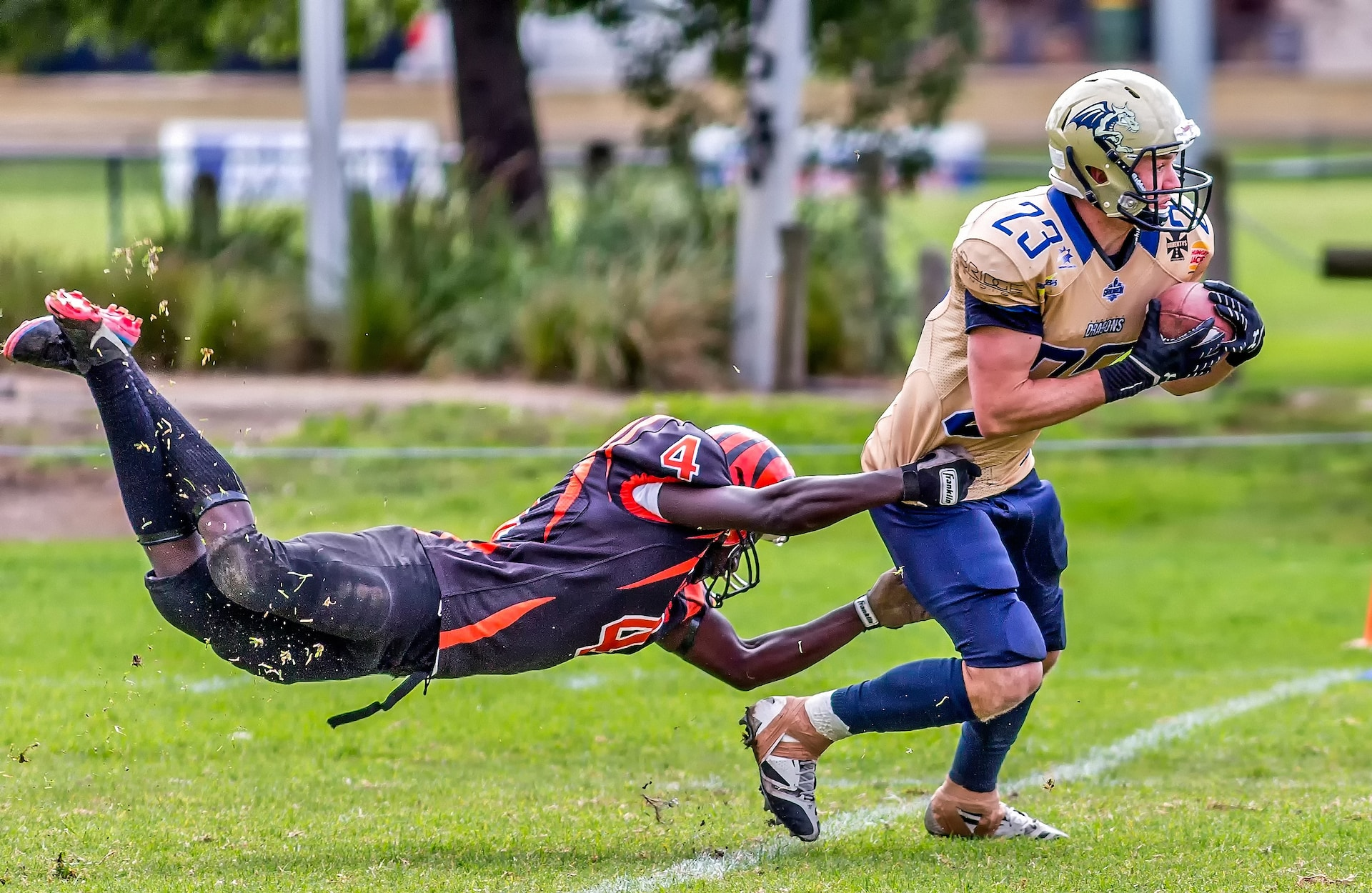
Another thing to consider when wearing football cleats is protection.
Most soccer shoes lack ankle support, which is essential for American football players who must avoid ankle sprains and other injuries while playing.
If you want to use soccer cleats for American football, ensure they come with extra cushioning around the ankles to protect your feet.
Overview of Soccer Cleats and American Football Cleats:
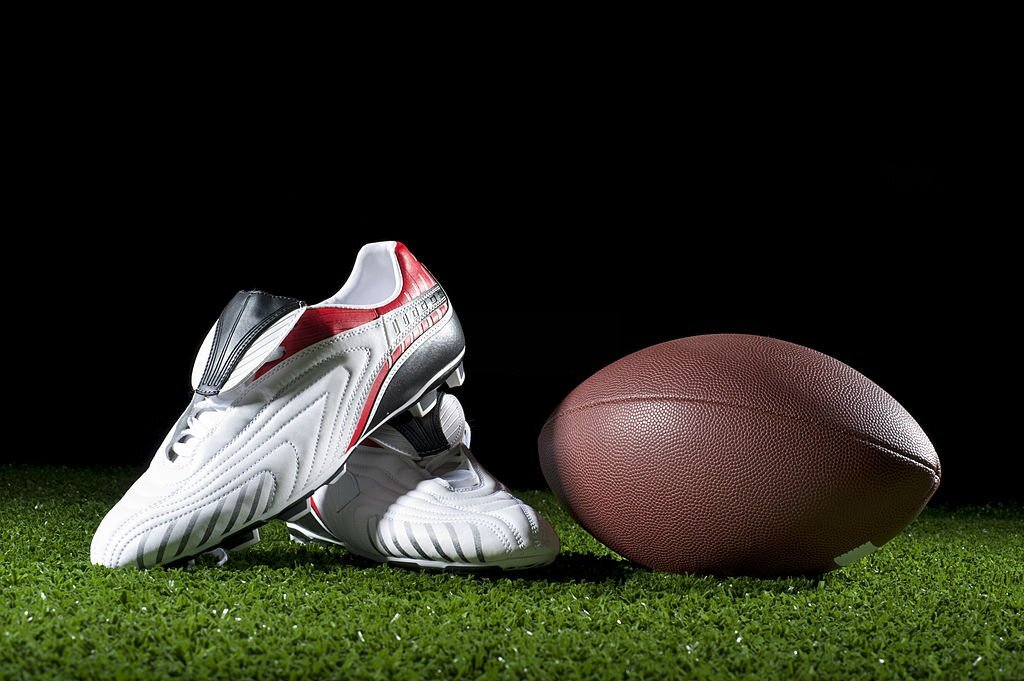
If you want to boost your performance on the field, careful consideration should be given when selecting soccer or American football cleats.
Soccer cleats are designed with traction and stability in mind, allowing for better control no matter what surface you play on.
On the other hand, investing in American football cleats is ideal if running long distances at high speeds is a requirement of your sport – they can offer extra support while sharpening up those cuts!
Why Do Football Players Wear Soccer Cleats?
Football players wear soccer cleats for a variety of reasons. Soccer cleats are designed to provide better grip, control, and stability on any surface — which can be especially helpful when playing on grass or artificial turf.
Additionally, they tend to be lighter than most American football shoes, allowing players to move quickly without sacrificing protection.
Are Soccer and Football Cleats the Same?
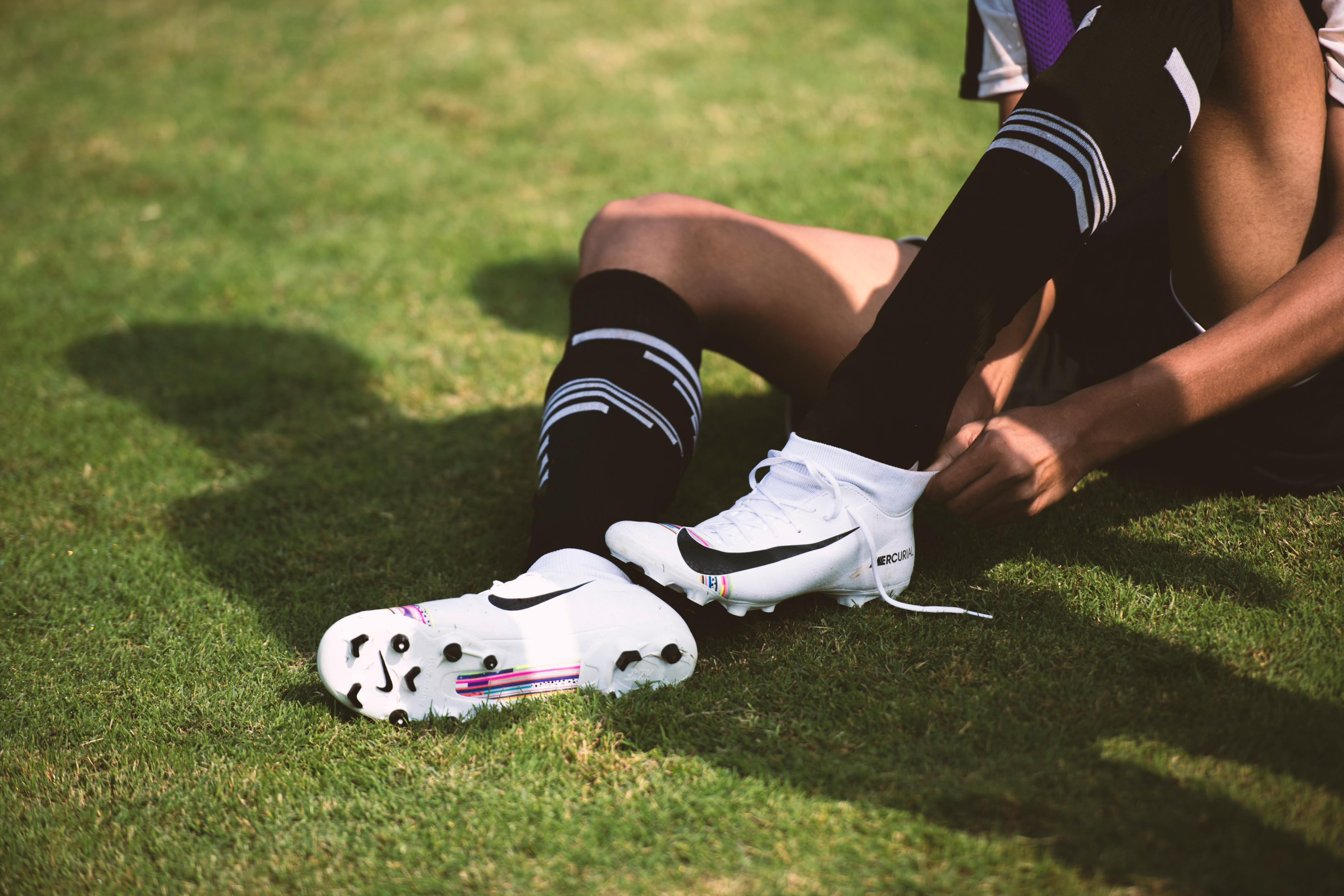
Soccer cleats:
- Soccer cleats are designed to provide grip on grass and artificial surfaces.
- They feature studs made of rubber, plastic, or metal.
- The number and arrangement of the studs will vary depending on the type of surface being played on.
- Some soccer cleats have 13 studs for firm ground, while others have 12 for soft ground play.
Football cleats:
- Football cleats are made to provide traction on both grass and artificial surfaces.
- Their low-cut design allows for greater maneuverability but also features heavier studs than soccer cleats.
- Football cleats have cubed studs, providing more grip and stability when the wearer makes quick cuts in the field.
- The number of studs on a football cleat can range from 6-14, depending on the type of surface being played on.
- Some football cleats have detachable plates that allow players to customize their traction needs based on different field conditions.
Pros and Cons of soccer cleats:
Pros:
- Soccer cleats are designed to provide more grip on grass and artificial surfaces.
- They feature lightweight materials that allow for greater speed and agility when playing.
- Soccer cleats have several different types of studs that can be used depending on the type of surface being played on.
Cons:
- Soccer cleats may need more traction for some football players in muddy or wet conditions.
- The studs may also wear down quickly if they are not replaced regularly.
Pros and Cons of football cleats:
Pros:
- Football cleats are designed for both grass and artificial surfaces.
- Their low-cut design allows for more excellent maneuverability when making quick cuts in the field.
- Football cleats have cubed studs that provide more grip and stability on the field.
Cons:
- Football cleats may be too heavy for some players, which can impede their speed and agility when playing.
- They also require more maintenance than soccer cleats, as the studs must be regularly replaced to maintain the traction needed for play.
What must you know before Swapping your Soccer Cleats for American Football Shoes?
Before swapping your soccer cleats for American football shoes, it is essential to consider the type of surface you will be playing on.
Soccer cleats are designed for soft and natural surfaces, while American football shoes are more suitable for playing on artificial surfaces.
Another key difference is the outsole construction of the two types of footwear.
Soccer cleats often feature shorter and conical studs, while American football shoes contain more prolonged and aggressive cleat configurations that help grip artificial surfaces.
Do Football Rules Allow Soccer Cleats?
Yes, football rules do allow soccer cleats. However, if you want to use soccer cleats for American football, they must have extra cushioning around the ankles to protect your feet.
It would help if you also chose a pair of soccer cleats with more aggressive studs.
How Do You Know if Cleats Are for Football?
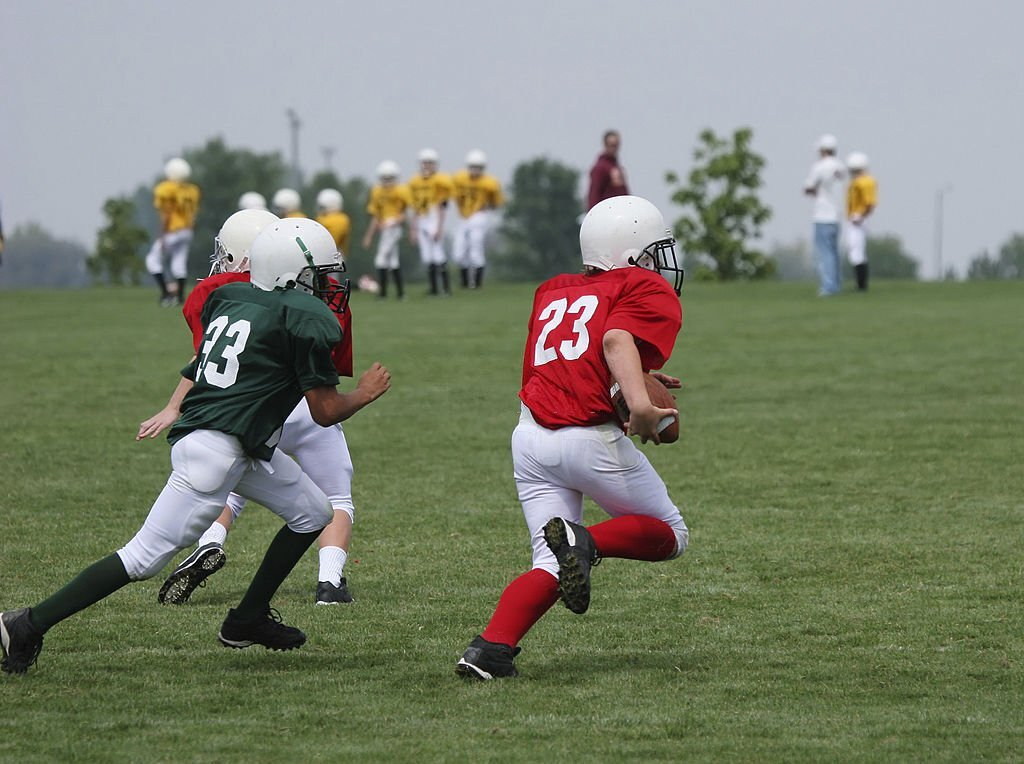
When it comes to purchasing cleats for football, it’s essential to know what to look for.
Football cleats typically have a low-cut design, allowing for more excellent maneuverability on the field.
These cleats also tend to have heavier studs than soccer cleats, which provide more grip and stability when making quick turns and cuts.
Football cleats come in a range of stud configurations, depending on the type of surface being played on.
Some football cleats have detachable plates, allowing players to customize their traction needs based on field conditions.
The number of studs in a football cleat can range from 6-14, depending on the surface.
On the other hand, soccer cleats are designed specifically for natural and artificial turf surfaces.
They tend to be lighter than most American football shoes, which allows players to move quickly without sacrificing protection.
Soccer cleats have several different types of studs that can be used depending on the type of surface being played on.
They typically feature studs made of rubber, plastic, or metal and the number and arrangement of the studs will vary based on the intended field.
4 Tips on How to Choose the Right Type of Cleat for Your Sport:
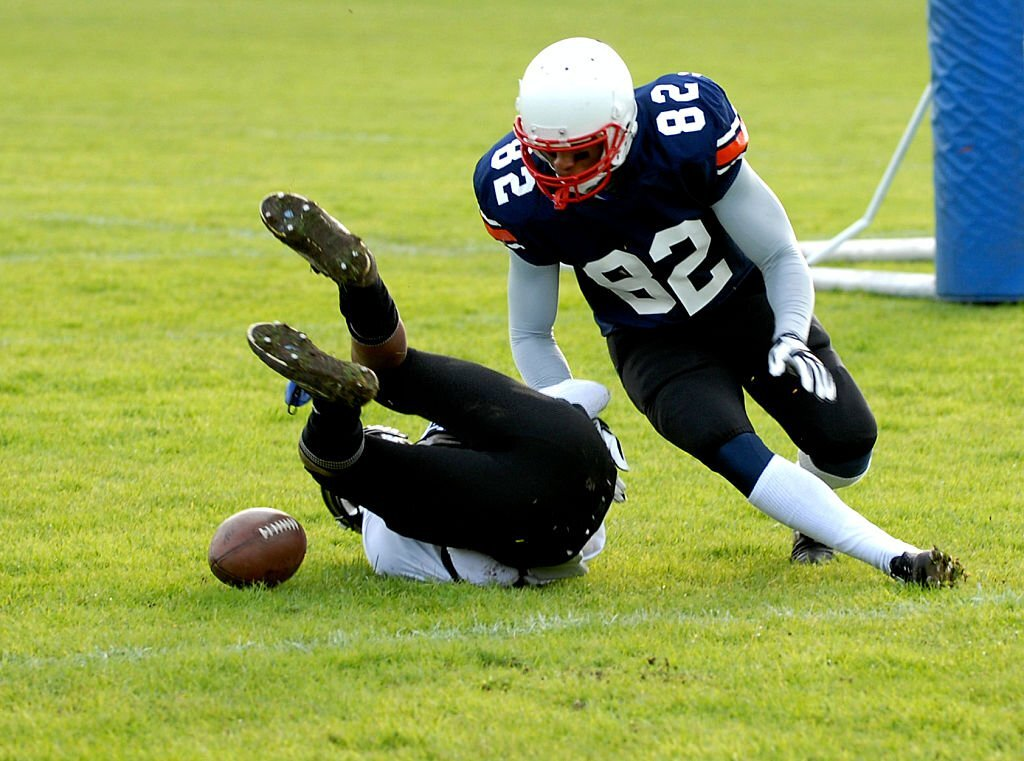
- Determine the level of cushioning needed based on the intensity of your sport. Soccer cleats typically have less cushioning than American football shoes, as they rarely come into contact with hard surfaces.
- Consider the type of surface and terrain you will be playing on. Soccer cleats are ideal for natural surfaces, while American football shoes are better suited for artificial surfaces.
- Look for a cleat with a suitable outsole construction to provide optimal grip and traction on different types of surfaces.
- Consider how often you will use them before investing in a pair of soccer or American football shoes. Both types of footwear require regular maintenance and cleaning to keep them looking their best and performing at their peak levels over time.
Recommendations on Which Type of Shoe is Best Suited for Each Sport:
Soccer cleats are ideal for soccer, as they feature shorter and conical toe studs that provide an ideal grip on natural turf.
For American football:
American football shoes are your best option, as they contain longer and more aggressive cleat studs for optimal traction on artificial surfaces. They also have a stiffer upper material to protect your feet from injury.
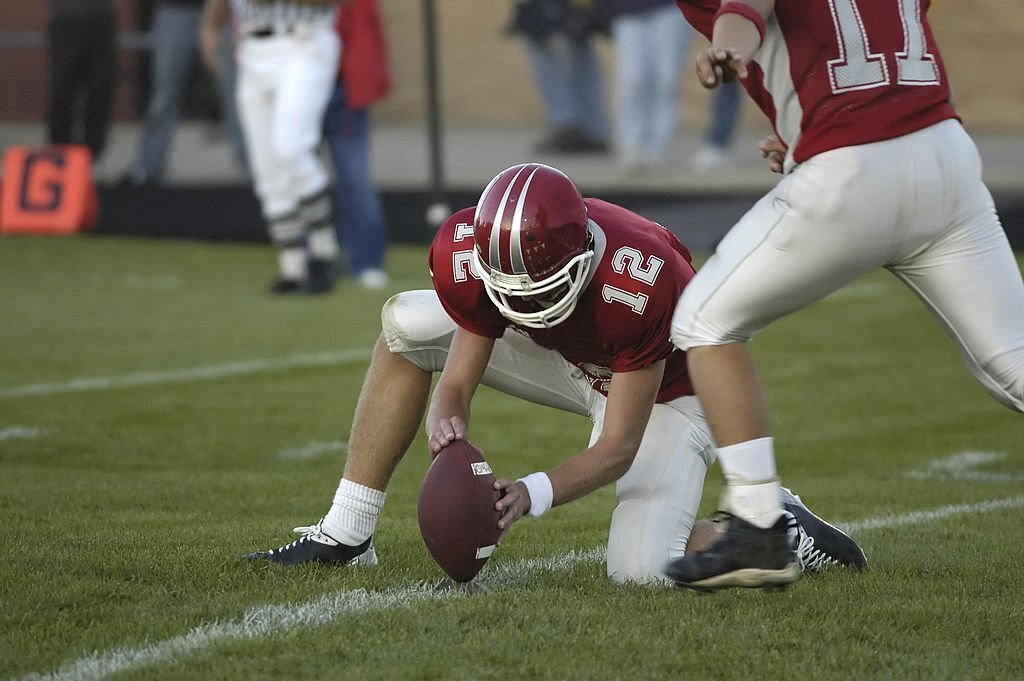
Safety Considerations When Playing in Either Sport with the Wrong Type of Footwear:
If you play soccer in too large cleats, your feet may slide inside the shoe and cause the studs to dig into your skin.
This could lead to injuries such as blisters, cuts, or bruises. American football shoes that need to have the correct outsole construction can provide inadequate grip and traction on artificial surfaces, leading to falls and potential fractures.
It is also important to remember that wearing soccer cleats for American football can increase your risk of ankle sprains due to their design not offering enough midfoot support.
Next Read: Can You Wear Soccer Cleats For Softball?
Conclusion:
It is clear that each sport has its specific type of cleat, and choosing the right one for your game is essential to optimize performance, stay safe, and minimize the risk of injury.
By researching the differences between soccer and American football cleats for your individual needs, you can make the best decision when selecting a pair of footwear for your sport.
With some knowledge and research, you can ensure you have the correct type of cleat for your game.
FAQs:
Why Shouldn’t You Use Football Cleats in Soccer?
Football cleats are unsuitable for soccer because they contain long and aggressive studs that can dig into the turf and increase your risk of falls and injuries. Additionally, wear football cleats because shoes do not provide enough midfoot support to ensure proper stability and agility during games.
What Type of Cleat is Best for Artificial Surfaces?
American football cleats are best suited for artificial surfaces because they contain longer and more aggressive studs, which provide superior traction and grip on synthetic turf. Additionally, football shoes have a stiffer upper material to protect your feet from impact and ensure optimal performance.
Are Soccer Cleats Better Than Football Cleats?
Both soccer and football cleats serve different purposes, and it is essential to choose the right one, depending on your sport. Soccer cleats are best suited for natural surfaces as they feature shorter, conical studs that provide ideal grip and traction. At the same time, American football shoes contain longer studs that are better suited for artificial surfaces.
Do Soccer Cleats Work for Football?
Soccer cleats can be used for football, but the performance may not be optimal. Soccer cleats are designed with shorter and conical studs for natural turf. In contrast, American football shoes contain longer and more aggressive studs, which provide superior grip and traction on artificial surfaces.
Can My Kid Wear Soccer Cleats for Football?
It is not recommended for your kid to wear soccer cleats for football as they provide inadequate support and can lead to falls and injuries. Choosing the correct type of footwear, depending on the sport, is essential to maximize performance and minimize the risk of injury.
Are Soccer Cleats And Football Cleats The Same?
Having played both sports, I can assure you that soccer cleats and football cleats are different. It would be bizarre if they were because both sports require different skills, and players need specific attributes from their gear to improve their experience.
Do I need cleats for flag football?
Yes, if you don’t want to slip and slide around the field, it is highly recommended and required that you wear cleats for flag football.
Do NFL kickers use soccer cleats?
NFL kickers typically use football cleats with a particular type of outsole construction that provides superior traction and grip on the field. Soccer cleats are unsuitable for this sport as they lack the necessary durability, stability, and support.
Can I Wear Soccer Cleats for Other Sports?
No, soccer cleats are designed specifically for soccer and may not offer the same support or performance as other sports. If you plan to play another sport, it is essential to research the appropriate type of cleat and select one that fits your individual needs. Additionally, wearing soccer cleats for other sports, such as football or basketball, can increase your risk of falls and injuries.


